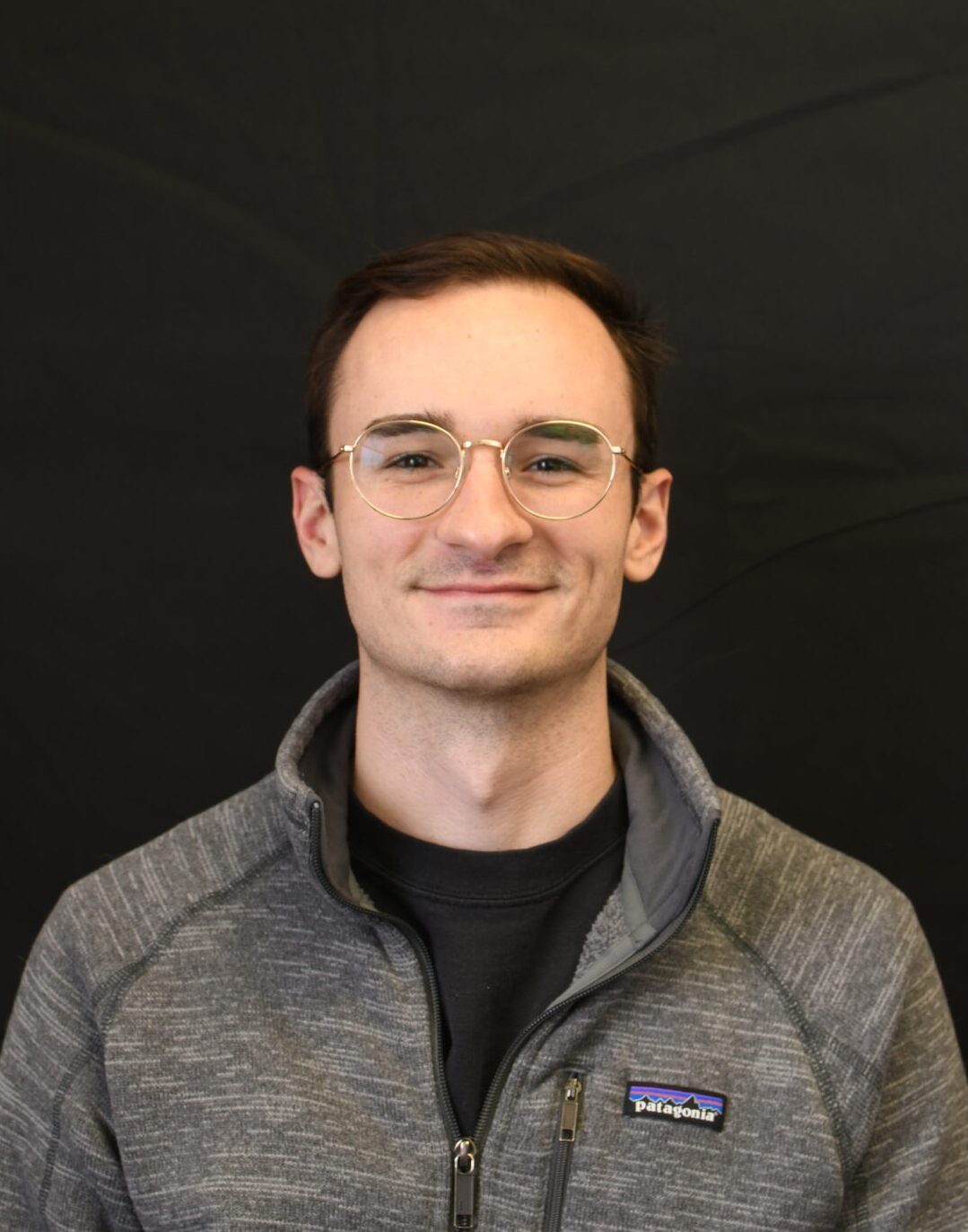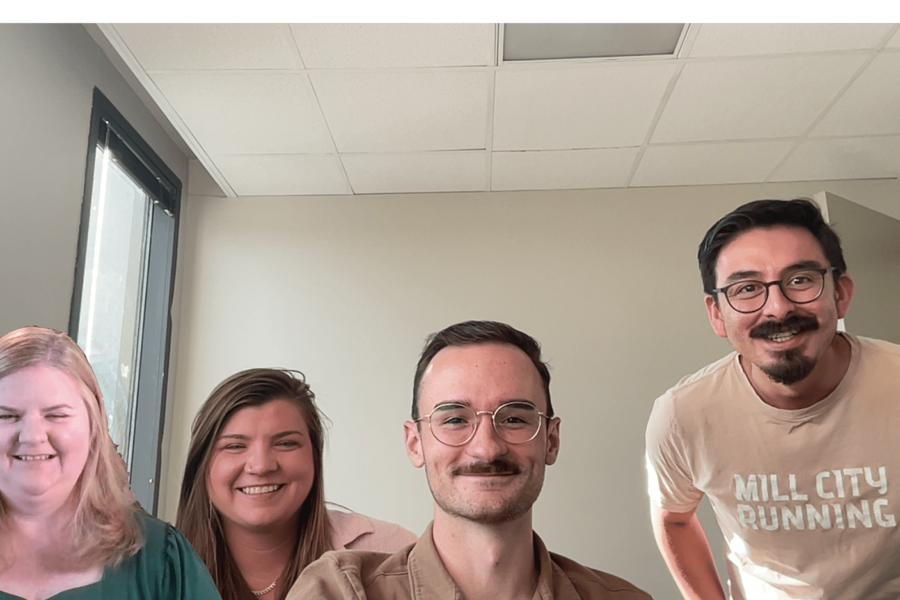When a surge in homelessness struck Chattanooga during the Covid-19 pandemic, the community’s homeless response leaders saw an urgent need for change. “We realized we don’t have an effective system, and it’s time to start looking at how to make those changes,” said Mackenzie Kelly, Executive Director at Chattanooga Regional Homeless Coalition.
This increase in unsheltered homelessness during the pandemic became a catalyst for improvements. The first thing they set out to improve was their data. Chattanooga/Southeast Tennessee (TN-500) has achieved Built for Zero’s quality data milestone for all single adults, which means the community now has a real-time, comprehensive data source for all single adults experiencing homelessness, including veterans and those experiencing chronic homelessness. It marks a critical milestone on their journey to making homelessness rare, brief, and nonrecurring for all individuals.
“Our theme through this has just been taking the next best step for our community,” added Jodie Legg, Data Analyst at Chattanooga Regional Homeless Coalition. “It’s a lot of work, but it’s what’s best for the people we’re serving and our providers.”
Redesigning assessment and data collection tools
Chattanooga, a midsize city of 180,000 in rural Hamilton County, leads a Continuum of Care (CoC) covering 11 counties with 375,000 residents. With the Appalachian Mountains and Tennessee River Valley nearby, this varied landscape necessitates different strategies to address the needs of its populations experiencing homelessness. The team deploys coordinated and organized outreach teams familiar with the varied terrain — such as caves, mountains, rivers, and woods — to ensure no one is overlooked.
As they sought to reach quality by-name data, Chattanooga had to strengthen its coordinated entry system. Providers use this system to allocate housing and services through a single process with standardized assessments and data procedures. Currently, most providers across the community have been trained to serve as intake points to ensure that individuals can access resources and housing support. By adopting a “no wrong door approach,” Chattanooga is now confident that they are capturing data on at least 90% of single adults experiencing homelessness, even within more rural areas.
But that wasn’t always the case. The community’s efforts to achieve quality data “felt like a season of change for everyone,” explained Steven Howell, Director of Operations at the Chattanooga Regional Homeless Coalition. The team had been using an assessment tool to screen and prioritize clients, but it wasn’t meeting the needs of their specific community.

“When people understand what you’re doing with the data they’re much more likely to participate when you’re collecting it.”
— Steven Howell, Director of Operations at the Chattanooga Regional Homeless Coalition
“We wanted an assessment tool that was more trauma-informed and one that would open up access to our clients … so other providers could use it,” said Legg.
After piloting other options, they developed a web-based tool to thoroughly protect clients’ privacy and security. The mobile-friendly design enabled street outreach workers to utilize it more easily. Additionally, enhanced accessibility ensured that agencies with different systems, such as domestic violence providers and VA, could employ the tool.
This increased the community’s access points by allowing coordinated entry assessment to be available in the areas where people were experiencing homelessness. “We were able to get that assessment tool into our schools, hospitals, health clinics, and libraries,” Legg said. “Most of those places want to be able to help, and this gives them a tangible way to do so.”
Coinciding with launching their new assessment, the Chattanooga team also tailored their data collection system to match the new tool better. This transition involved switching from Google Suite to Microsoft products to provide a more secure way to share information. Their previous Homeless Management Information System (HMIS) allowed data errors to go unchecked and restricted many providers from using it. By customizing their HMIS, the community aligned its specifications with partners that had stringent privacy standards, ultimately expanding the number of homeless service providers contributing data.
“One of our primary goals has been increasing data transparency,” Howell said. “When people understand what you’re doing with the data they’re much more likely to participate when you’re collecting it.”
Data Talks with NYU Furman Center’s Housing Solutions Lab
Leaders from Community Solutions, NYU Furman Center’s Housing Solutions Lab, and Chattanooga/Southeast Tennessee discuss how communities can collect and harness real-time, person-specific homelessness data.
“Outreach is near and dear to this team.”
To reach the quality data milestone, Chattanooga’s homeless response system had to demonstrate they have a comprehensive outreach program to ensure that at least 90% of all single adults without shelter are known to the system.
“Outreach is very near and dear to this team,” Howell explained. The community has a multi-agency collaboration called the Regional Outreach Cooperative (ROC), and outreach teams coordinate across the region to engage individuals experiencing unsheltered homelessness or living in places not meant for habitation.
Community members experiencing homelessness can also connect to the Coordinated Entry System by receiving housing assessments at access points across the CoC. More than 30 providers and partner organizations serve as access points across the region, along with libraries, hospitals, and schools.
On their journey to the quality data milestone, the Chattanooga team began including outreach workers to their weekly case conferencing meetings. These meetings bring together key participants — such as frontline workers — to collaborate to remove barriers and help house clients faster.
“What this team has done really well is engaging people across different levels of the homeless response system, where previously voices could have been left out,” commented Chris Hernandez, Coordinated Entry Specialist at Chattanooga Regional Homeless Coalition. “It’s really about recognizing the value of their input and their perspective.”
Adopting a client-centered approach
A crucial element of Chattanooga’s efforts is their commitment to equity and a client-centered approach.
“The client is who we’re trying to serve, and that’s where our focus should always be,” Legg said. In practice, it involves people with lived experience throughout the work, in ways like reviewing policies and procedures and formulating trauma-informed questions in their assessment tools.
The community also uses the quality, by-name data they collect to better understand trends in homelessness and measure the effectiveness of their existing strategies — or to adjust those strategies and allocate resources differently. They compare the data to the census to identify under- or overrepresented groups in their homelessness numbers.
“The biggest thing is seeing where we might not be reaching — where our gaps in services are,” noted Kelly. “Three years ago, we realized less than 1% of our data was showing Latino folks experiencing homelessness in our community, despite 8% of our population in Chattanooga identifying as Hispanic or Latino.”
“It was not that they weren’t experiencing homelessness; it was that we were widely under-serving them, and they were not finding access to the system. So we started partnering with different organizations that were serving that population. And now our data is showing much more representative numbers and those folks are able to access our system much easier.”
Cross-sector collaboration with health care systems
Quality data has strengthened Chattanooga’s ongoing collaboration between their health care system, local hospitals, and the homeless response system. This cross-sector coordination strives to improve health and housing outcomes for individuals experiencing or at risk of homelessness. One way this has been put into practice is by having representatives from the health care systems participate in case conferencing.
“We recognized that we were each doing aspects of the work and likely assisting the same individuals. However, in collaboration, we could really play off the strengths and the connections that each system had to potentially provide a holistic approach that is trauma-informed and something that can be sustained,“ Hernandez said.
Through these partnerships, the Chattanooga team has connected local hospital systems with the homeless response system. Within their community, the local hospital and health centers are now equipped and trained to conduct homeless assessments, providing valuable information about people experiencing homelessness who enter into the health systems and getting that information entered directly into HMIS. This partnership expands the outreach efforts of the homeless response system, increases the comprehensiveness of the community data, and shifts the accountability of connecting individuals to resources to reduce homelessness to a community level.

“In collaboration, we could really play off the strengths and the connections that each system had to potentially provide a holistic approach that is trauma-informed and something that can be sustained.”
— Chris Hernandez, Coordinated Entry Specialist at Chattanooga Regional Homeless Coalition
Collaboration between health care and homeless response systems has reinforced the importance of having quality data and standards. Knowing people moving between the two systems supports a more client-centered and seamless continuum of care.
As Howell noted, “Most likely, a social worker at a hospital is not also going to have the resources to get someone moved into housing ASAP. What I’ve now heard from health care partners is that, through their connection to the coordinated entry assessment in particular, they now have an actionable step to move forward and connect people to housing resources. It gives that person the opportunity to say, ‘I can do something in that moment.’”
Prioritizing the long-term goal
After reaching quality data for all single adults in the community, Chattanooga strives to continue making improvements so homelessness is rare, brief, and nonrecurring across all populations.
“Now that we have a system that works a lot better, the next goal is to get more funded partners so that there’s a lot more places to refer people,” Howell said. Specifically, the community hopes to seek more participation from housing providers, particularly in rural counties, which are often left out of those conversations.
“Ending homelessness is a very complex challenge, and it’s a long-term commitment,” Legg said. “But we really have to prioritize the long-term goal of making homelessness rare, brief, and non-recurring, while adapting to specific community needs and taking that next best step to achieve that goal.”
The Chattanooga/Southeast Tennessee CoC team would like to thank all of the community agencies, organizations, and service providers who contribute data to their shared database in the collective work to end homelessness.
AIM Center
Bradley Cleveland Community Services Agency
Bradley County Schools
Caring Place
Chatt State Community College
Chattanooga Housing Authority
CHI Memorial
City of Chattanooga Office of Homelessness and Supportive Housing
Cleveland High School
Connecting Vets to Resources
CRHC
Erlanger Outreach
Family Promise of Chattanooga
Generation Stronger
Girls Inspired
GRACE Grundy
Hamilton County Coalition
Hamilton County Schools
Harbor Safe House
Homeless Healthcare Center
Hope Center
HUD/VASH
Maclellan Family Shelter
McNabb Center
Metropolitan Ministries
Salvation Army
SETHRA
SSVF (Volunteer Behavioral Health)
St. Vincent de Paul
United Way Ocoee
Volunteer Behavioral Health
Welcome Home





